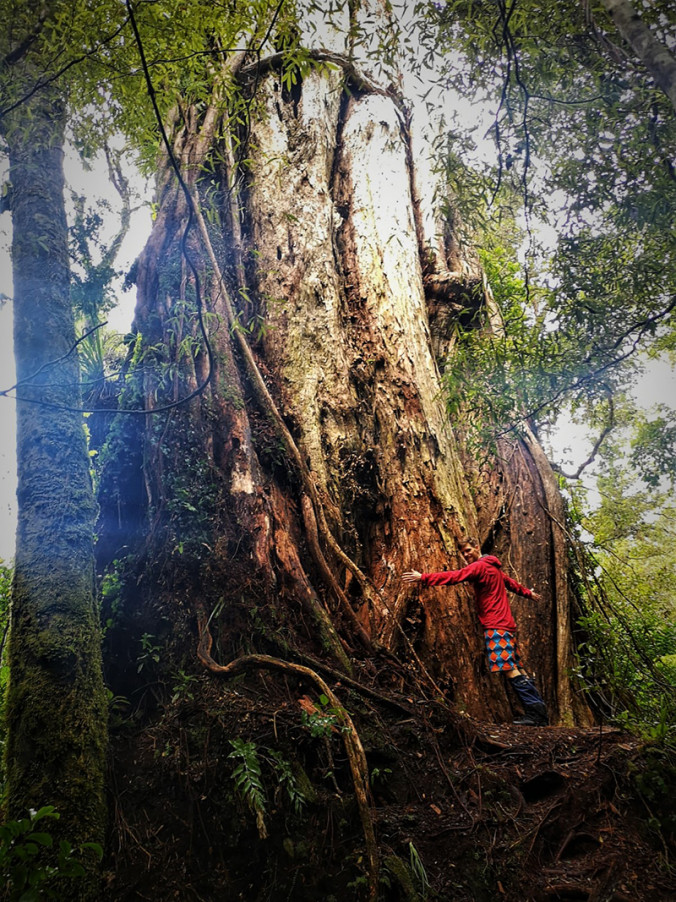The now New Zealand piece of the once great southern continent Gondwanaland drafted south before the Australian eucalypts evolved, but did, and still does, host a eucalypt ancestor, the Metrosideros trees, including the pohutukawa, or New Zealand Christmas Tree, plus the Northern and Southern rātā trees. So, no eucalypts (or snakes) made it onto the New Zealand as Gondwanaland fragmented – all those millions of years ago.
Talking about rātā trees, hidden in the Akatarawa Forest, near New Zealand’s capital city of Wellington, is one of the country’s best kept tree secrets – reported as a living treasure equal to anything found in the national museum.
Recently tracked down by my nephew, consulting engineer Brett Halkett (see image), is a giant Akatarawa Northern rātā (Metrosideros robusta). This tree has a trunk size that rivals New Zealand’s iconic kauri tree, Tāne Mahuta. At a height of 39 metres, the Akatarawa rātā has been called a living relic, and a national treasure that has been standing hidden for centuries in deep forest well before the arrival of early Polynesians to New Zealand’s shores.
The tree stands on a plateau nearly 200 metres north-west of the Akatarawa river, in dense forest and is not easily visible until within less than 50 metres of the giant tree.
One of the country’s tallest forest trees, Northern rātā are iconic lowland forest trees that are now rare, as they are endangered by persistent browsing by introduced Australian brushtail possums. Northern rātā are also renowned for producing a blaze of red flowers in summer.
One of New Zealand’s tallest forest trees, Northern rātā produce a blaze of red flowers in summer.
Rātā trees begin life as a seedling up in the crown of other tall forest trees. Rātā roots descend and, over a few centuries, eventually strangle their host to form trunks of their own. Strangler trees are a feature of tropical and warm temperate rainforests, but rātā trees stand out as having some of the largest root trunks of any tree species.
In the absence of a regular pest control programmes, many juvenile rātā trees have been killed by introduced Australian possums. In the case of the Akatarawa giant rātā, the Greater Wellington Regional Council has a custodial duty to ensure this living national treasure is protected by sustained possum control. In a statement, the regional council said it’s been monitoring possum numbers and an aerial 1080 poison operation will be required soon.
